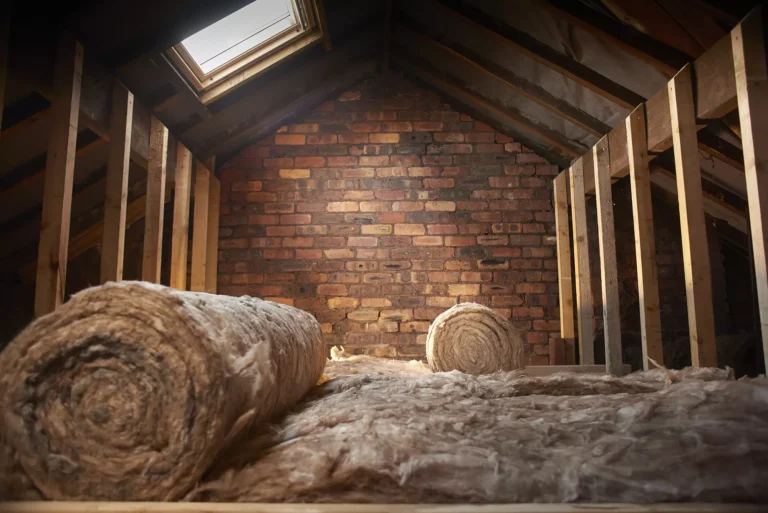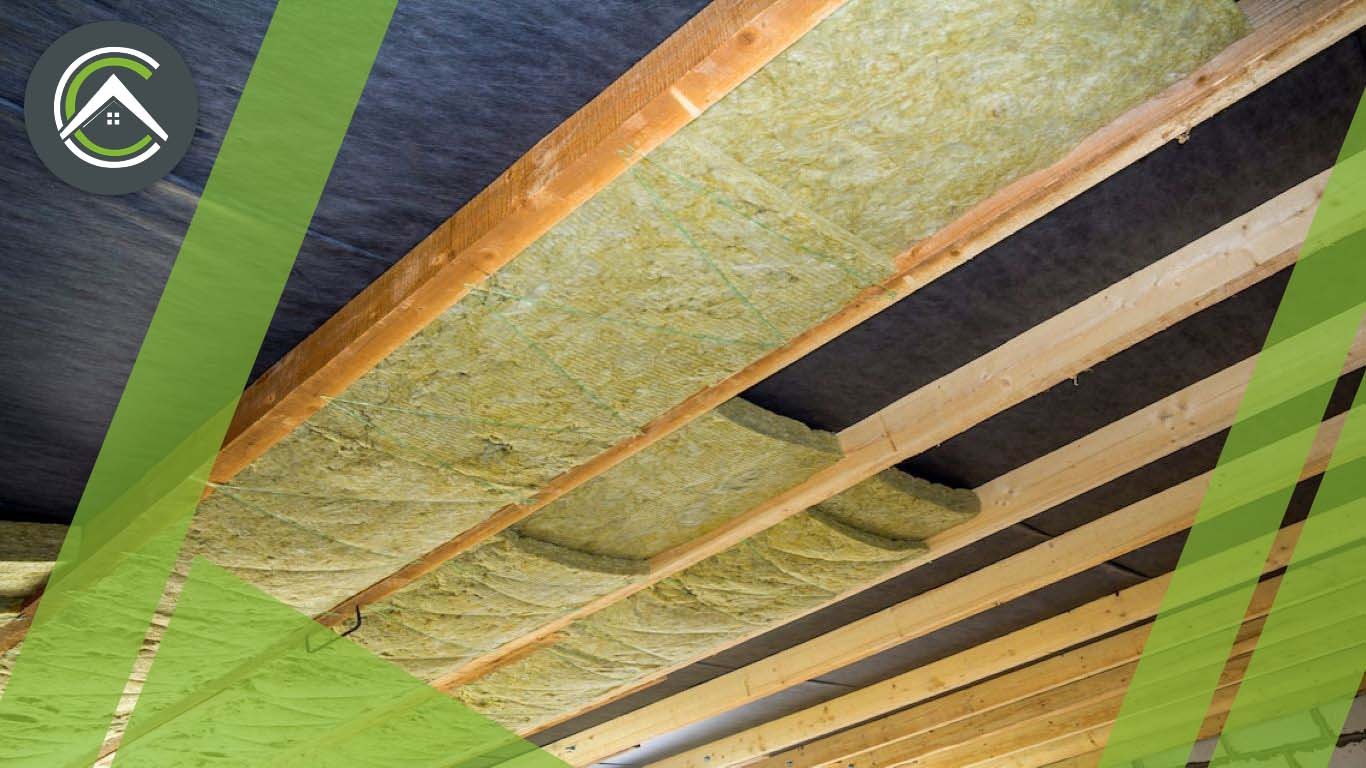
Is There Asbestos in Your Loft? What to Know Before Insulation Removal
If your home was built before the 1990s, there’s a chance that your loft insulation could contain asbestos—a hidden danger
A safe dwelling must have fire resistant insulation. Most insulation nowadays is fireproof, but ensuring that yours is as fireproof as you want it to be is critical for your peace of mind. Here’s what you should know.
Fire Resistant Insulation inhibits the spread of fire and maintains building structural integrity. It is made to withstand high temperatures and emit no hazardous fumes if it touches fire. It is not only fire resistant, but it also has excellent thermal and acoustic insulation capabilities.
One of the most significant elements to consider when deciding which materials to use when insulating a structure is how they will behave in the event of a fire.
To be employed, insulation goods must pass many fire protection tests, with these tests utilizing contractors and specifiers to find the best fire-rated insulation available for their needs.
The BS EN 13501-1 categorization system is widely used today, and it includes five active tests to determine whether a material is suited for purpose. They consider factors such as flame spread, smoke release, heat levels, and combustibility.
After completing all testing, the material is assigned an official fire rating classification, a Euroclass rating.
Since making insulation completely safe is impossible, the terms “fire-resistant” or “fire-rated” are usually more appropriate. Different types of insulation can survive high temperatures and won’t catch fire. Also, keeping smoke and fires from getting through is essential. Using fire-resistant insulation is forbidden in modern buildings, significantly taller ones like tower blocks.
Under severe temperatures, all types of insulation will eventually become flammable, although some are better at preventing flames from spreading.
Fiberglass insulation, often known as glass wool insulation, is a good, easy-to-install, energy-efficient solution for insulating cavity walls, floors, and lofts. This insulation is constructed from fabulous glass strands woven into an insulating material before a specially designed resin is sprayed as a bonding agent.
This means that fiberglass insulation fire resistance has both moisture- and fire-resistant qualities, and it is thought to survive temperatures of up to 1200°C, making it a relatively fireproof insulation solution. Fibreglass insulation should not burn on its own, but if it is backed with paper or foil, it can be highly flammable in a fire, so keep this in mind when determining how fireproof your home is.
Spray foam insulation is another popular cavity wall insulation option since it can be sprayed into wall cavities and expands and hardens to offer thermal – and often soundproof – insulation. Spray foam insulation has a high energy absorption rate and can even serve to improve the structural integrity of a building.
If you’re looking for fire-resistant spray foam insulation, Icynene® spray foam is a suitable choice because it includes fire-retardant qualities that may aid in slowing the spread of flames.
Cellulose insulation provides a higher R-value and fewer possible irritants than fiberglass insulation. Because cellulose insulation is primarily constructed from recycled paper, it can never be entirely fireproof. However, it can be treated with flame-retardant chemicals such as boric acid and ammonium sulfate to boost its fire-resistant characteristics. Including boric acid also helps to lessen the possibility of insulating mold and insect damage.
Rockwool insulation, also known as stone wool or mineral wool insulation, is non-combustible, although it cannot withstand as much heat as other types of insulation. However, rockwool insulation is frequently used with different types of insulation to improve its fireproof capabilities.
Rockwool insulation has an unusually high melting temperature because it is often formed from solid rock, so many people pick it as a fireproof insulation material in their homes.

Fireproof insulation isn’t the only fire resistant material for your construction project. Here’s what you need to know about the fire-resistant qualities of typical building materials, ranging from bricks to slate and sandstone to wood:
Bricks – Because bricks are manufactured in a fire kiln, they can survive extremely high temperatures and are thought to be fire-resistant up to 1200°C.
Steel – Steel beams will buckle in a fire at roughly 600°C, but this building material has a far higher melting point, around 1400°C.
Sandstone is one of the most fire-resistant stones to employ in construction. Sandstone comprises microscopic mineral particles and rock fragments, making it highly durable.
Slate – If you’re seeking a fire-resistant building material for a roof, slate tiles are a fabulously durable and non-combustible option.
Timber – When treated with chemicals like sulfate, ammonium phosphate, or zinc chloride, timber can be far more fire-resistant than other wood used in buildings.
Granite – granite can explode when exposed to high temperatures, so consider carefully where you intend to utilize this material in your construction project.
Concrete – Because concrete loses strength quickly in the face of fire, this is another building material that should be handled with caution if you intend to use it in your home.
Stucco plaster – stucco plaster is an excellent fire-resistant wall treatment.
Glass – Windows crack and shatter with severe heat, but double-glazed glass takes twice as long to break in the event of a fire.
Cork is a naturally fireproof alternative if you’re seeking fire-resistant flooring materials. Choose a rug with a shorter pile for your floor because it will be more fire-resistant.
Along with fire-resistant building components, it is critical to explore fire-stopping and fire-protective products that can be used to increase the fireproofing of your property.
A fire retardant is a material used to slow or stop fire spread. Some construction materials can be coated in a fire-retardant chemical, but it is more typical for them to be covered in a fire resistant substance.
Fire retardants are typically sprayed on active fires to reduce their size or possibly put them out completely. They are rarely used in homes since they contain chemicals that can be dangerous to humans.
Whether you want to install insulation or fire prevention systems in your house or company, let confirmed help you. We specialize in fire and life safety systems to protect people and property.
Please contact us if you want to learn more or arrange services. Online or phone us right now.
Best Fire Resistant Thermal Insulation
When installing fire resistant insulation in a home, utilize mineral wool or fiberglass and other fire protection measures. These are accessible for usage across much of a structure.
The Best Fire Resistant Loft Insulation
Using mineral wool rolls or batts within a loft’s joists can provide fire resistance and thermal insulation. Mineral wool goods will be non-combustible and resistant to melting and fire. Solid mineral wool batts can also be used as fire-resistant roof insulation.
Best Fire Resistant Wall Insulation
Fire retardant mineral wool batts can be utilized in stud walls. To strengthen the fire resistance of your internal wall, you may choose to use metal studs rather than wooden ones. Mineral wool batts are available for cavity wall insulation in a new construction. Other insulating materials will not give the same level of fire resistance.

If your home was built before the 1990s, there’s a chance that your loft insulation could contain asbestos—a hidden danger

Canadian winters are no joke, and heating your home efficiently is more important than ever. In 2025, cold climate heat

Your basement plays a huge role in your home’s comfort, energy efficiency, and even air quality—but only if it’s properly
WhatsApp us